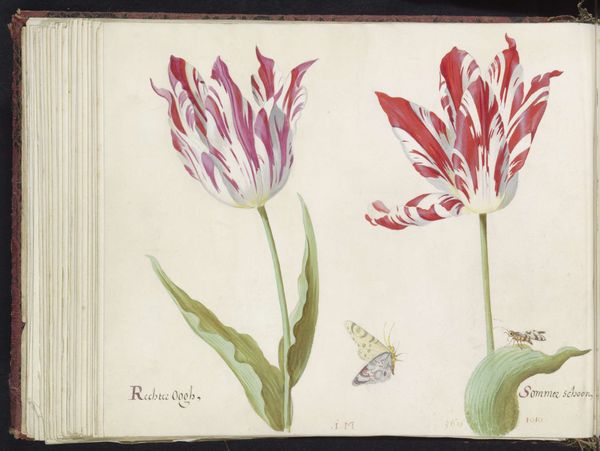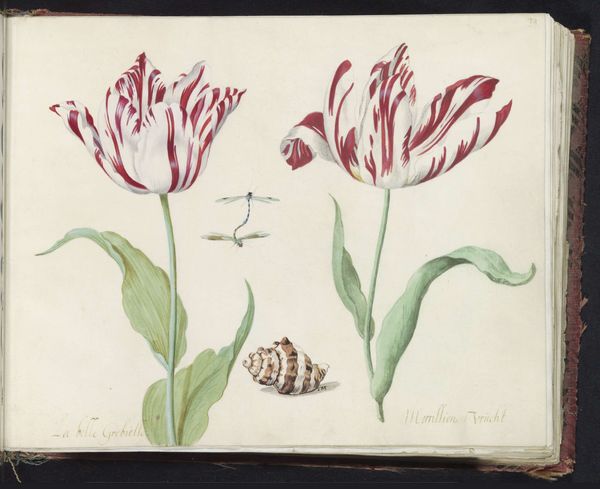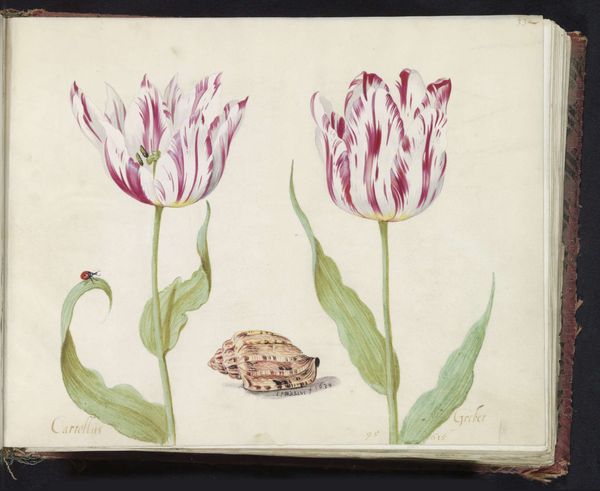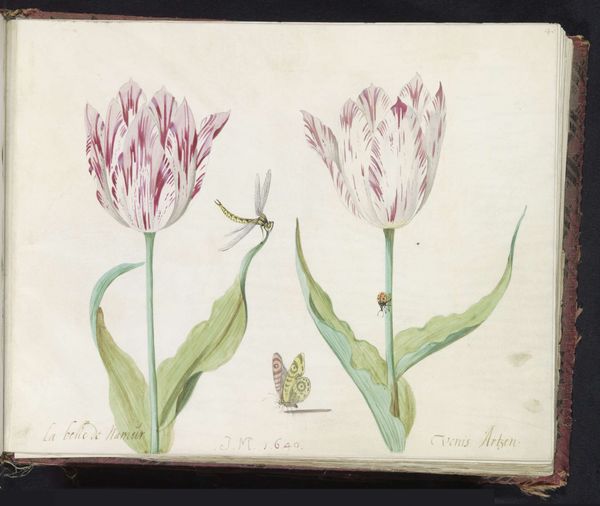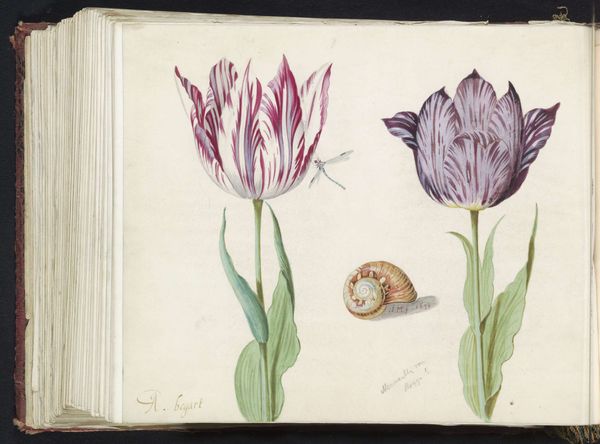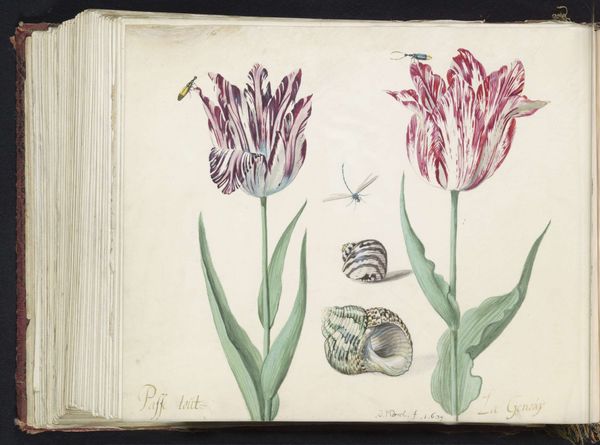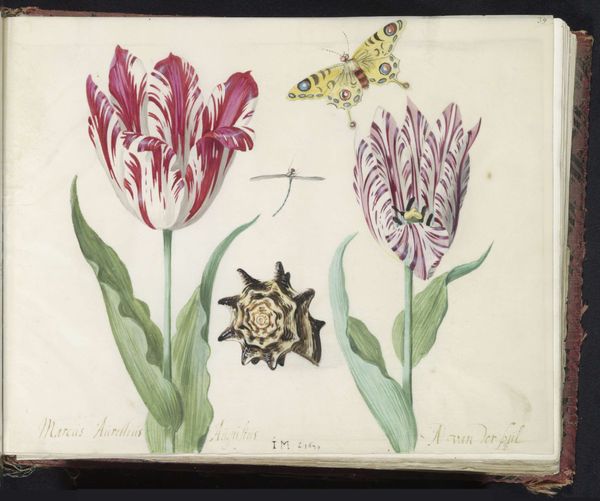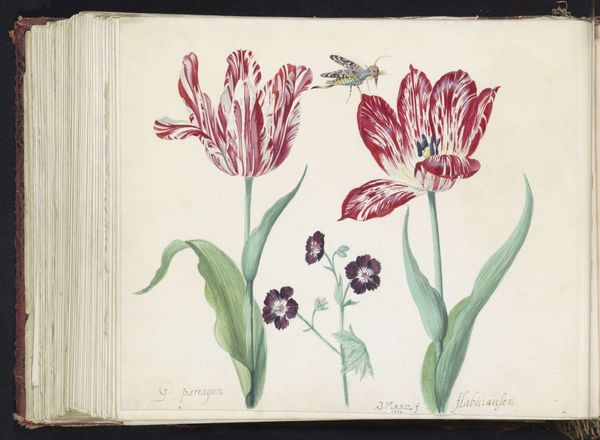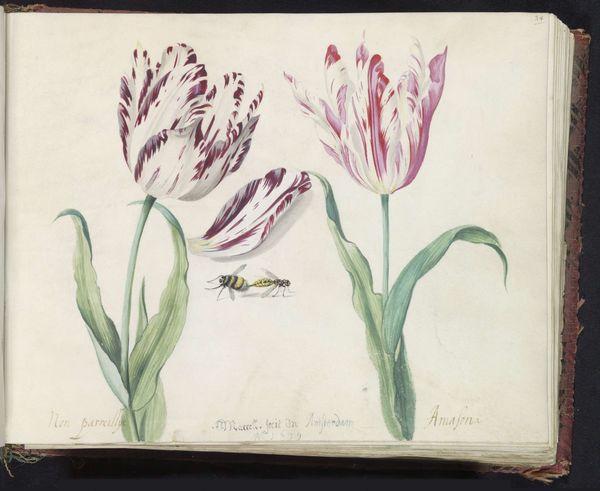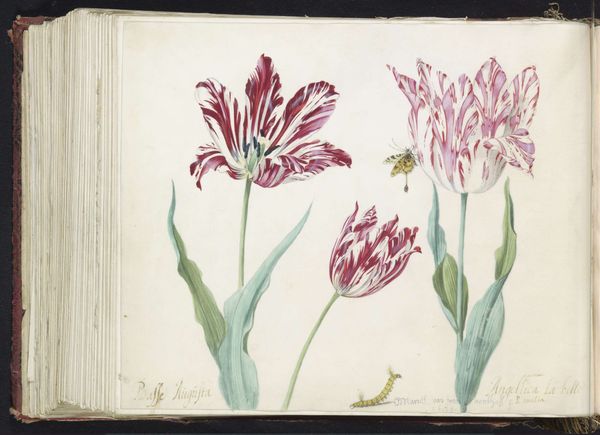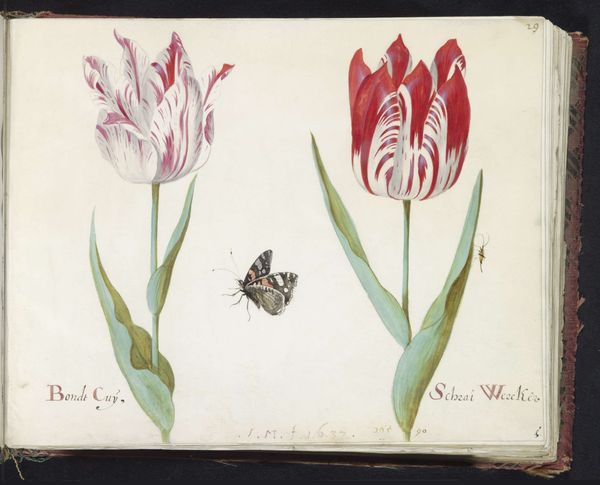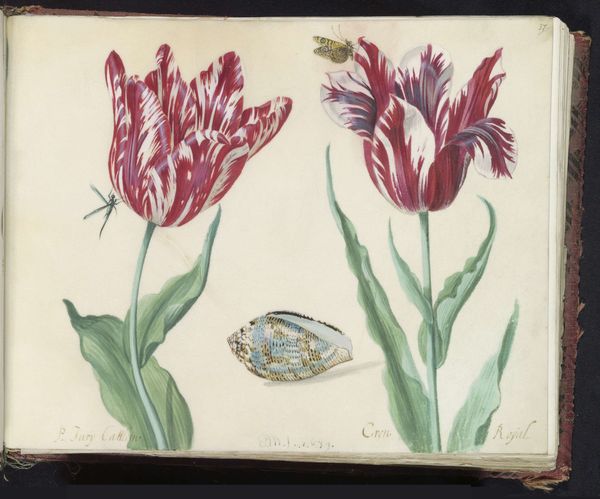
painting, watercolor
#
narrative-art
#
baroque
#
painting
#
watercolor
#
watercolour illustration
#
botanical art
Dimensions: height 265 mm, width 335 mm
Copyright: Rijks Museum: Open Domain
Editor: This watercolour illustration, “Two Tulips with a Shell and Two Crickets” by Jacob Marrel, created in 1639 and housed in the Rijksmuseum, feels quite delicate. I'm curious about how it deviates from typical still lifes of that time. What are your initial thoughts? Curator: It’s important to remember the Dutch Golden Age, a period where tulip mania gripped the Netherlands. These weren't just flowers; they were commodities, speculative assets traded at exorbitant prices. Marrel’s choice of watercolour is crucial here. Think about the process – the meticulous layering, the almost scientific precision. He's not just painting tulips; he's documenting a luxury good, a product of global trade networks. Consider where the pigments came from. Editor: So, the materials themselves tell a story of trade and consumerism? Curator: Exactly. And what about the crickets? They introduce an element of transience, of nature reclaiming its space amidst this artificial frenzy. Even the shell; its origins and how it found its way into the scene, hint at global trade routes and collecting practices of the elite. Where did Marrel get these pigments and the shell, and who was his intended audience for such a detailed rendering of wealth? Editor: I never considered the watercolour as part of the narrative. Now I see it adds a layer of preciousness, almost echoing the value placed on the tulips themselves. Curator: Precisely. It’s not just a depiction of beauty; it’s an examination of the labor, the materials, and the economic forces shaping society. It allows us to view nature in an economic way and makes us consider what it depicts Editor: I’m starting to see this isn’t just a pretty picture, but a commentary on the economics of beauty and consumerism of the time. Thank you for expanding my perception. Curator: It's important to realize how everyday material and manufacturing process tell a different and maybe untold story behind artworks.
Comments
No comments
Be the first to comment and join the conversation on the ultimate creative platform.

